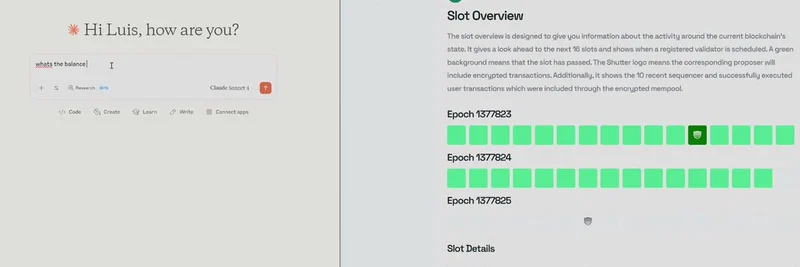The Ethereum Community Conference (EthCC) is a hub for innovation and discussion within the blockchain space, and this year was no exception. Luis Bezzenberger, a prominent figure in the Ethereum ecosystem, presented a revolutionary concept at EthCC that could redefine the future of decentralized finance (DeFi). His talk focused on a "DeFi 3.0" user experience (UX) flow that promises to ensure zero information leakage of trade information until it's confirmed, leveraging local machine learning models (LLMs) and the Shutter Network.
The Vision of DeFi 3.0
Bezzenberger's presentation introduced a novel approach to enhance privacy and security in DeFi transactions. The core idea is to use a local LLM combined with threshold cryptography provided by the Shutter Network. This combination aims to protect users' trade information from being exposed until the transaction is irrevocably confirmed on the blockchain.
Key Components
Local LLM (Local Machine Learning Model):
The local LLM acts as an intermediary that processes user intents and prepares transactions. It ensures that sensitive information remains on the user's device, reducing the risk of data breaches.Shutter Network:
Shutter Network utilizes threshold cryptography, a technique where a group of key holders must collaborate to decrypt information. This ensures that no single entity can access the encrypted transaction data prematurely.User Interaction:
Users interact with the system by confirming their intent for a transaction. The local LLM then encrypts the transaction using keys generated by the Shutter Network, ensuring that the information is only accessible once the transaction is confirmed.
How It Works
Bezzenberger's UX flow can be broken down into several steps:
User Intent Confirmation:
The user confirms their intent to execute a transaction through a local interface. This step ensures that the user is fully aware and in control of the transaction details.Local Processing with LLM:
The local LLM processes the transaction details, preparing it for encryption. This step happens entirely on the user's device, maintaining privacy.Encryption via Shutter Network:
The transaction is encrypted using threshold cryptography provided by the Shutter Network. This ensures that the transaction data is secure and cannot be accessed until a sufficient number of key holders collaborate.Transaction Confirmation:
Once the transaction is confirmed on the blockchain, the encrypted data is decrypted, and the transaction is executed. This step ensures that no information leakage occurs before confirmation.
The Impact
This innovative approach has significant implications for the DeFi space:
- Enhanced Privacy: By keeping transaction details local and encrypted until confirmation, users' privacy is significantly enhanced.
- Reduced MEV (Miner Extractable Value): The use of threshold cryptography minimizes the risk of front-running and other malicious extraction of value, a common issue in DeFi.
- Improved User Experience: The seamless integration of local LLMs and threshold cryptography provides a user-friendly experience without compromising security.
Visualizing the Concept
To better understand the flow, let's look at the diagram Bezzenberger shared:
This diagram illustrates the interaction between the user, local LLM, agent, encryption keys, and the Shutter Network, highlighting the flow of information and the points of encryption and decryption.
Conclusion
Luis Bezzenberger's presentation at EthCC showcases a promising future for DeFi, where privacy and security are paramount. The integration of local LLMs and the Shutter Network's threshold cryptography offers a robust solution to the challenges of information leakage and malicious MEV. As the DeFi space continues to evolve, innovations like this will play a crucial role in shaping a more secure and user-friendly ecosystem.
For those interested in diving deeper, Bezzenberger's talk is available here, providing a comprehensive look at the technical details and potential applications of this DeFi 3.0 UX flow.


